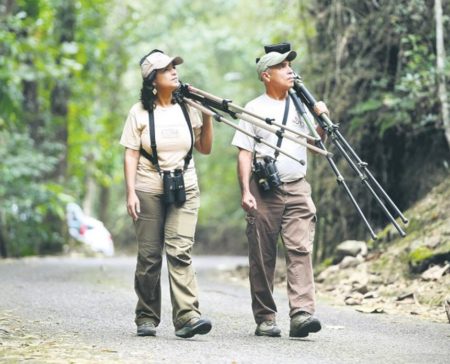
Join Justin Proctor on his adventure to Puerto Rico where he was invited to help launch an exciting new book on one of the Caribbean’s most unique birds.
Everybody in Puerto Rico knows José (Pepe) González Díaz and Felisa (Fela) Collazo Torres in the same way: as a husband-wife team just as inseparable from each other as they are from their island’s natural landscapes. They wake up every day just as in love as when they met decades ago, and just as ready as they were the day before (and the day before that) to go out amidst their mountains, valleys, and rivers to discover something new…together. I’ve never met another couple like them. They are, like Puerto Rico, something beautifully special.
It is no hyperbole when I make the claim that Pepe and Fela have collectively spent tens of thousands of hours researching, photographing, filming, and producing educational materials about their island’s flora and fauna. It isn’t difficult to find their Aves Puerto Rico FelPe (Fela + Pepe) insignia on dozens of full length documentaries covering everything from endemic butterflies to birds. Their extensive YouTube channel is a good place to start your way down the rabbit hole. Keep in mind as you look through their material how much “behind the scenes” time and effort it takes to capture some of the high-quality, rare footage of many of the species that are featured. A 20-second shot of never before seen behaviors was likely the product of days, if not weeks, of time spent waiting and watching from within a cramped little blind.
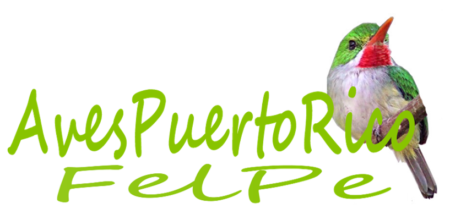
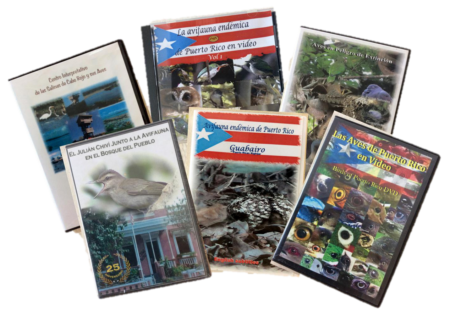
But beyond these invaluable pieces of work, Pepe and Fela are probably even better known for something else.
Todies.
For more than 15 years, they have consumed themselves with unravelling the story of the Todidae family. And the more they dug, the more they found. The Todidae family is unique for so many reasons, but perhaps the most obvious is that it is a small family of only five species, all of which are collectively endemic to the Greater Antilles. You’ll find one species in Cuba, one in Jamaica, two in Hispaniola, and one in Puerto Rico.
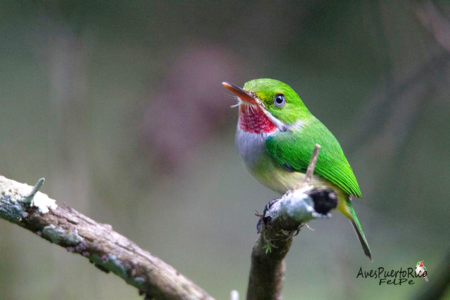
That’s it. They belong to the Caribbean and nowhere else.
Todies are also unlike any other birds that you’ll ever see, guaranteed, which makes them a major attraction for birders and photographers from all over the world. But don’t just take my word on it. Pick up a copy of Pepe and Fela’s coauthored book, La Raíz de las Antillas: La Historia de la Familia Todidae, which has certainly proven itself to be the most comprehensive historical account of these birds ever published. The book is now available on Amazon, and should find its way into the hands of any birder that has ever had the pleasure of spending (or longed to spend) a few moments with a tody.
The book does an excellent job of navigating readers through the last three-hundred years of documentation of the todies, and how so many people struggled to describe these birds for what they really were. Consistently confused with hummingbirds and oftentimes inaccurately illustrated, the todies weaved their way in and out of ornithological accounts as different birds almost every time. And so readers will quickly come to appreciate the detective work that Pepe and Fela have undertaken so as to guide us efficiently and accurately through the convoluted timeline of the todies. The late James W. Wiley summarized it well:
“The book is an important contribution to our knowledge of the family Todidae as well as a major contribution to Antillean ornithology in general. The authors’ exhaustive investigation and compelling presentation are an exceptional model for others to follow.”
Readers will also be quick to notice that the authors have interlaced an important message throughout their book: that their island’s tody species—the Puerto Rican Tody, or locally the San Pedrito—rightfully deserves a change of its scientific name, Todus mexicanus. Through their historical account of the species, Pepe and Fela make a clear case for changing T. mexicanus to T. portoricensis or T. borinquensis (the latter derived from “Borinquén”, the original Taíno name for Puerto Rico). Geographically speaking, this makes sense, because the Puerto Rican Tody has never touched foot in Mexico. And the reason for the misleading mexicanus species name has likely stemmed from just a quick moment of confusion that occurred in the late 1830s, when two tody specimens collected at two different localities were later misidentified and subsequently documented incorrectly.
However, the process of procuring a formal scientific name change through the International Commission on Zoological Nomenclature (ICZN) can be a challenging one. Unfortunately, current taxonomy is rife with species that have geographically-misleading scientific names, and the ICZN does not usually address these cases. However, Pepe and Fela’s case has additional ground to stand on (read the book to find out!), and so they are continuing to push forward. For them, the name is important; the San Pedrito is as unique and beautiful as the island of Puerto Rico itself, and because of that, has limitless potential to grow into an icon of pride and stewardship for Puerto Ricans over their island’s rich biological diversity. But the tody and what it can signify loses power and influence when its name does not match the people that should care about it the most.
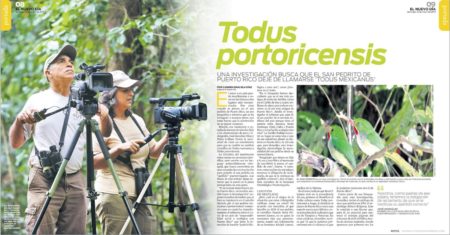
Over the last couple of years, La Raíz de las Antillas (for short) has been enhanced and amplified through a series of revisions and new editions. It was in early 2018 that Pepe and Fela reached out to BirdsCaribbean, and ultimately our Journal of Caribbean Ornithology (JCO) editorial team, to see if we’d be willing to help proofread and copy-edit the first full-length English edition, appropriately titled, The Root of the Antilles: A History of the Todidae Family. One of the JCO’s best editors, Alice McBride, decided to take it on. She did such an outstanding job of cleaning the grammar that Pepe was compelled to go back to the original Spanish edition and make some changes. As the Managing Editor of the JCO, I was excited to see us involved with the future of the book, while equally interested in seeing how the collaboration could grow over time. A few months later, the opportunity came in the form of an invite from Pepe and Fela for us to attend the much-awaited, public release of their book scheduled for the 8th of December in Adjuntas, Puerto Rico.
One of the perks of being employed by a non-profit are the (sometimes) flexible hours. With the rest of the BirdsCaribbean and JCO crew tied up with “work,” I was thrilled to be offered the opportunity to fly down and represent us. It was a chance to see Puerto Rico for the first time, be hosted personally by Pepe and Fela, and see my fifth and final tody species. Done deal, sign me up! The hospitality I received and the fun I had over just a short five days on the island is worthy of its own full-length account. But in short, it was spectacular, and one of those trips where the puzzle pieces all just come together perfectly, over and over again. From spending afternoons with the Puerto Rican Parrots in El Yunque and the shorebirds in Cabo Rojo, to sipping a fresh cup of mountain coffee while seeing my first San Pedrito at La Mocha, to squeezing in a grand-finale sunset from the Arecibo Observatory (eat your hearts out James Bond fans), I had no choice but to fall in love with Puerto Rico (it would have been easy despite).
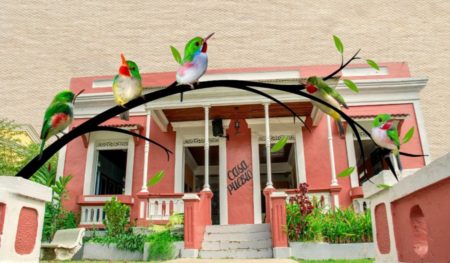
Through all of that, it was the day of Pepe and Fela’s book release that took me most by surprise. Looking back, I’m not sure what I originally expected to unfold, but it was definitely second-rate to the magnitude of what greeted me. The event was hosted by Casa Pueblo. My best attempt at describing this organization is by saying that they’re engaged with absolutely every initiative that a community needs and wants, and they’re doing it right. An hour before the ceremony was going to take place, the venue’s auditorium that could comfortably seat 75 people was overflowing into every open space available. Among the crowd were members of the Sociedad Ornitológica Puertorriqueña (SOPI), passionate birders, wildlife photographers, professors, school groups, and a myriad of community members. Everyone was excited about Pepe, Fela, the todies, and the great success story surrounding all three. Bands played, beautiful presentations and speeches were made, handmade gifts were given, and food and drink were shared—it was a true celebration, filled with friendship and pride.
The invitation we all received was for a book release, but anyone attending would agree that what actually transpired was an opportunity for Puerto Rico to show its gratitude to Pepe and Fela for all they had done, and continue to do, for the people and wildlife of the island they love. I consider myself lucky and fortunate to have been a part of that truly special day.
The story of the Puerto Rican Tody can no longer be told without the addition of Pepe and Fela, nor can their personal story be told without the tody. I hope that everyone reading this gets a chance to meet all three of them. In the meantime, while the winter days are short and cold, brush up on your tody history by picking up a copy of The Root of the Antilles: A History of the Todidae Family. And by doing so, you’ll be supporting all of the great work and forward progress that it stands for.
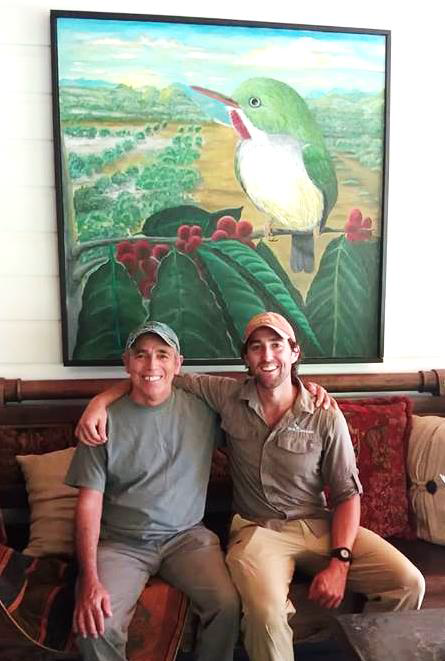

Excelente, espero que se presente en el Festival literario de la montaña, el 27 y 28 de abril en nuestro Festival.
Me encanta este reportaje. Espero que puedan alcanzar sus metas de cambiar el apellido del Todus al de todo un boricua portorricensis.
Les quiero.
Becky Orama
What a wonderful story and great treasure in Pepe and Fila! Thanks for sharing your adventure with us.
Pepe y Fela : Hacen un pacto civico-social, con la flora y la fauna. La flora y fauna, no tienen fronteras, no contaminan el ambiente, tienen sistema pero no tribunales. Dichosos mis dos grandes amigos auto-didactas amantes de la libertad.
Thanks Sandy, so glad you enjoyed the story, and yet Pepe and Fela are a treasure!!! All the best, Lisa Sorenson
Gracias Sandy Anzalone. Nos alegra haya sido de su agrado.
Muy agradecidos por tan hermoso artículo. Ha sido un placer recibirle en Puerto Rico y mostrarle parte de los encantos de nuestro país, en especial nuestra avifauna. Es un honor para nosotros poder contar con el apoyo de BirdsCaribbean.